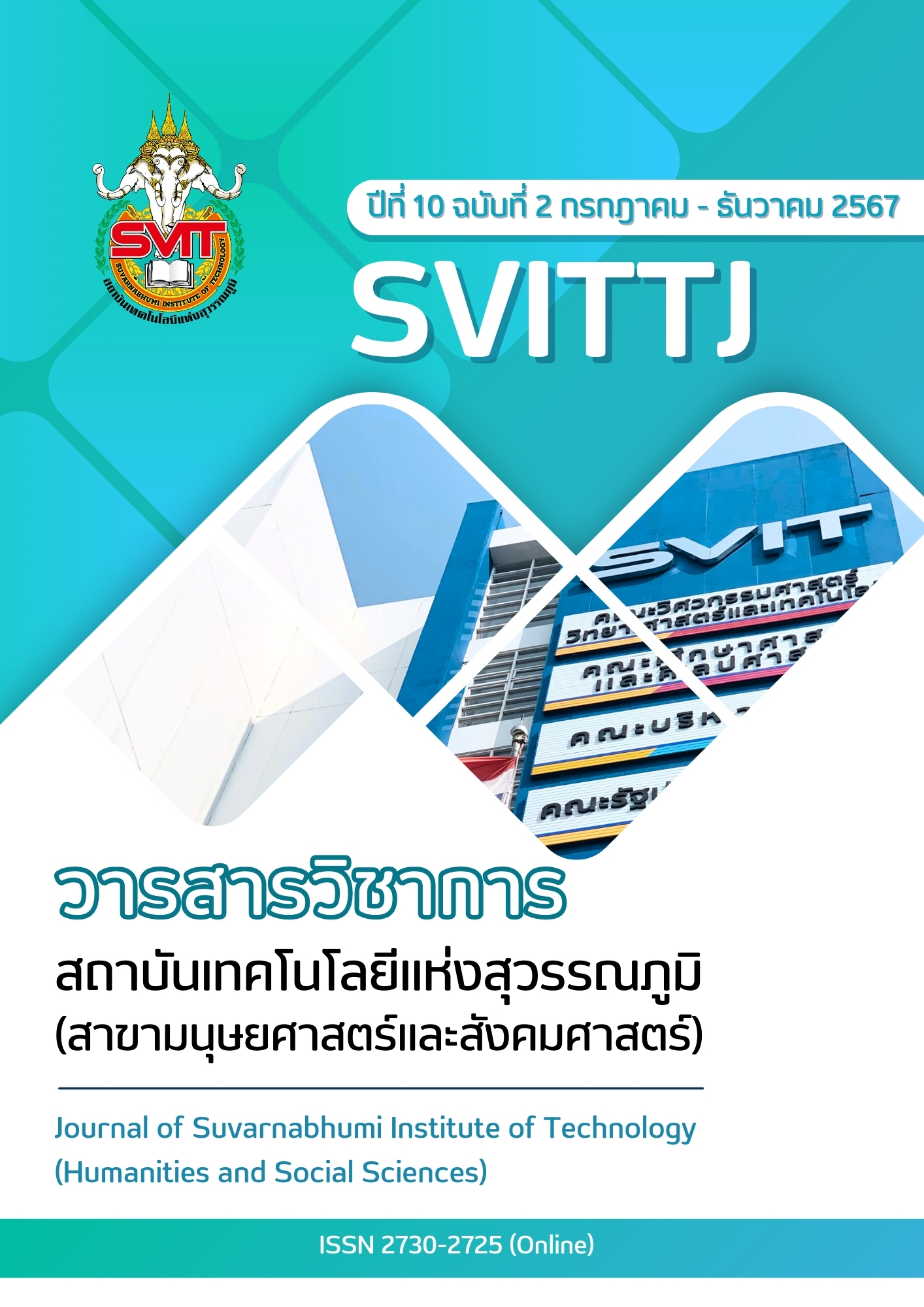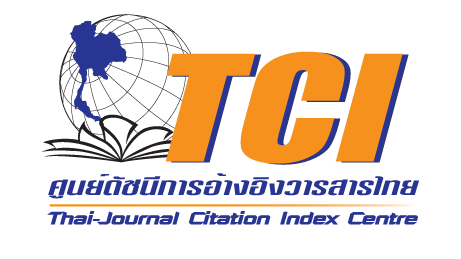KEY INFLUENCERS OF INTENTION TO USE SOCIAL MEDIA AMONG UNDERGRADUATES IN CHENGDU, CHINA
Keywords:
Usage of Social Media, Utilitarian Value, Social Benefit, Social Overload, Life SatisfactionAbstract
This research investigates the various factors influencing the intention to use social media in ten universities. The proposed conceptual framework delineates the causal associations between the usage of social media, utilitarian value, hedonic value, social safeness, share intention, social benefit, social overload, and life satisfaction. The study employed a quantitative methodology with a sample size of 500 participants. Questionnaires were distributed to undergraduate students from ten selected universities who use WeChat. A sampling method was purposive, stratified random, and convenience sampling. The researcher utilized the Structural Equation Model and Confirmatory Factor Analysis techniques to analyze the data, assessing model fit, reliability, and construct validity. The study's findings revealed that utilitarian value significantly influences shared intention. Share intention presented the strongest impact on life satisfaction, followed by social benefit and social overload. Six hypotheses were proven to fulfill research objectives. Hence, it is recommended that social media developers, higher educators, and educators focus on improving social media functions to enhance students' perception of its social benefit and foster a positive attitude and intention toward their life satisfaction.
References
Akkaş, C., & Turan, A. H. (2023). Social network use and life satisfaction: a systematic review. Mental Health and Social Inclusion. Advance Online Publication. https://doi.org/10.1108/mhsi-03-2023-0037
Al-Mamary, Y. H., & Shamsuddin, A. (2015). Testing of the Technology Acceptance Model in Context of Yemen. Mediterranean Journal of Social Sciences, 2(1), 11-23. https://doi.org/10.5901/mjss.2015.v6n4s1p268
Ardichvili, A. (2008). Learning and knowledge sharing in virtual communities of practice: motivators, barriers, and enablers. Advances in Developing Human Resources, 10(4), 41-554. https://doi.org/10.1177/1523422308319536
Awang, Z. (2012). Structural equation modeling using AMOS graphic (1st ed.). Penerbit Universiti Teknologi MARA
Babin, B. J., Darden, W. R., & Griffin, M. (1994). Work and/or fun: measuring hedonic and utilitarian shopping value. Journal of consumer research, 20(4), 644-656. https://doi.org/10.1086/209376
Batra, R., & Ahtola, O. T. (1991). Measuring the hedonic and utilitarian sources of consumer attitudes. Marketing Letters, 2(2), 159-170. https://doi.org/10.1007/bf00436035
Baum, A., Calesnick, L. E., Davis, G., & Gatchel, R. (1982). Individual Differences in Coping With Crowding. Journal of Personality & Social Psychology, 43(4), 821–830. https://doi.org/10.1037/0022-3514.43.4.821
Bentler, P. M. (1990). Comparative fit indexes in structural models. Psychological Bulletin, 107(2), 238-246. https://doi.org/10.1037//0033-2909.107.2.238
Bentler, P. M., & Bonett, D. G. (1980). Significance tests and goodness of fit in the analysis of covariance structures. Psychological bulletin, 88(3), 588-606. https://doi.org/10.1037/0033-2909.88.3.588
Best, P., Manktelow, R., & Taylor, B. (2014). Online communication, social media and adolescent wellbeing: A systematic narrative review. Children and Youth Services Review, 41, 27-36. https://doi.org/10.1016/j.childyouth.2014.03.001
Bruns, A. (2008). Blogs, Wikipedia, and Second Life: From Production to Prod usage. Peter Lang.
Carr, N. (2010). The web shatters focus, rewires brains (1st ed.). Wired.
Carter, C. S. (1998). Neuroendocrine perspectives on social attachment and love. Psych neuroendocrinology, 23(8), 779-818. https://doi.org/10.1016/s0306-4530(98)00055-9
Castells, M. (2000). The Rise of the Network Society. Blackwell.
Chau, P. Y. K. (1997). Reexamining a model for evaluating information center success using a structural equation modeling approach. Decision Sciences Journal, 28(2), 309-334. https://doi.org/10.1111/j.1540-5915.1997.tb01313.x
Davis, N. E., Dabner, N., Mackey, J., Morrow, D., Astall, C., & Cowan, J. (2011). Converging offerings of teacher education in times of austerity: Transforming spaces, places, and roles. Proceedings of Society for Information Technology and Teacher Education International Conference 2011. Nashville.
Diener, E. D., Emmons, R. A., Larsen, R. J., & Griffin, S. (1985). The satisfaction with life scale. Journal of personality assessment, 49(1), 71-75. https://doi.org/10.1207/s15327752jpa4901_13
Donagan, A. (2017). Choice: The essential element in human action (2nd ed.). Taylor & Francis.
Fornell, C., & Larcker, D. F. (1981). Evaluating structural equation models with unobservable variables and measurement error. Journal of Marketing Research, 18(1), 39-50. https://doi.org/10.1177/002224378101800104
Gagné, M. (2009). A model of knowledge‐sharing motivation. Human Resource Management: Published in Cooperation with the School of Business Administration. The University of Michigan and in alliance with the Society of Human Resources Management, 48(4), 571-589. https://doi.org/10.1002/hrm.20298
Gilbert, M. (2009). Shared intention and personal intentions. Philosophical studies, 144(1), 167-187. https://doi.org/10.1007/s11098-009-9372-z
Gilbert, P. (1989). Human Nature and Suffering. Erlbaum.
Gilbert, P. (2005). Compassion: Conceptualizations, research and use in psychotherapy. In P. Gilbert (Ed.), Psychology Press (pp. 118-150). Routledge.
Ha, J., & Jang, S. S. (2010). Perceived values, satisfaction, and behavioral intentions: The role of familiarity in Korean restaurants. International Journal of Hospitality Management, 29(1), 2-13. https://doi.org/10.1016/j.ijhm.2009.03.009
Helms, J., Nicolas, G., & Green, C. (2010). Racism and Ethnoviolence as Trauma: Enhancing Professional Training. Traumatology, 16(4), 53-62. https://doi.org/10.1177/1534765610389595
Hirschman, E. C., & Holbrook, M. B. (1982). Hedonic consumption: emerging concepts, methods, and propositions. Journal of marketing, 46(3), 92-101. https://doi.org/10.2307/1251707
Hsu, C. L., & Chen, M. C. (2018). How gamification marketing activities motivate desirable consumer behaviors: Focusing on the role of brand love. Computers in human behavior, 88, 121-133. https://doi.org/10.1016/j.chb.2018.06.037
Huang, T. K., Wang, Y. T., & Lin, K. Y. (2022). Enhancing brand loyalty through online brand communities: the role of community benefits. Journal of Product & Brand Management, 31(5), 823-838. https://doi.org/10.1108/jpbm-08-2020-3027
Hussain, I. (2012). A Study to Evaluate the Social Media Trends among University Students. Procedia - Social and Behavioral Sciences, 64, 639–645. https://doi.org/10.1016/j.sbspro.2012.11.075
Jadhav, V. G. (2014). Application of social networking services (SNS) for library collaboration: An exploratory study. International Research: Journal of Library and Information Science, 4(1), 1-10.
Jiang, Z., & Hu, X. (2016). Knowledge sharing and life satisfaction: The roles of colleague relationships and gender. Social Indicators Research, 126(1), 379-394. https://doi.org/10.1007/s11205-015-0886-9
Kaplan, A. M., & Haenlein, M. (2010). Users of the world, unite! The challenges and opportunities of Social Media. Business horizons, 53(1), 59-68. https://doi.org/10.1016/j.bushor.2009.09.003
Keesling, J. W. (1972). Maximum likelihood approaches to causal analysis [Ph. D. dissertation, Department of Education, University of Chicago].
Kuo, Y. F., & Feng, L. H. (2013). Relationships among community interaction characteristics, perceived benefits, community commitment, and oppositional brand loyalty in online brand communities. International Journal of Information Management, 33(6), 948-962. https://doi.org/10.1016/j.ijinfomgt.2013.08.005
Lee, S., & Kim, D. Y. (2018). The effect of hedonic and utilitarian values on satisfaction and loyalty of Airbnb users. International Journal of Contemporary Hospitality Management, 30(3), 1332-1351. https://doi.org/10.1108/ijchm-09-2016-0504
Lelkes, O. (2008). Happiness across the life cycle: Exploring age-specific preferences. Wien: European Centre for Social Policy and Research.
Levinson, P. (2009). New new media (1st ed.). Pearson.
Ma, L., Zhang, X., & Yan Ding, X. (2018). Social media users’ share intention and subjective well-being: An empirical study based on WeChat. Online Information Review, 42(6), 784-801. https://doi.org/10.1108/oir-02-2017-0058
Maier, C., Laumer, S., Eckhardt, A., & Weitzel, T. (2012). When social networking turns to social overload: explaining the stress, emotional exhaustion, and quitting behavior from social network sites’ users. European Conference on Information Systems Proceedings, 10-13.
Maier, C., Laumer, S., Eckhardt, A., & Weitzel, T. (2015). Giving too much social support: social overload on social networking sites. European Journal of Information Systems, 24(5), 447-464. https://doi.org/10.1057/ejis.2014.3
Mayfield, A. (2008). What is social media. Cibmtr Org.
Maziriri, E. T., Nyagadza, B., Mapuranga, M., & Maramura, T. C. (2022). Habitual Facebook use as a prognosticator for life satisfaction and psychological well-being: Social safeness as a moderator. Arab Gulf Journal of Scientific Research, 40(2), 153-179. https://doi.org/10.1108/agjsr-04-2022-0011
McCarthy, D., & Saegert, S. (1978). Residential density, social overload, and social withdrawal. Human Ecology, 6(3), 253-272. https://doi.org/10.1007/bf00889026
Moghavvemi, S., Sharabati, M., Paramanathan, T., & Rahin, N. M. (2017). The impact of perceived enjoyment, perceived reciprocal benefits and knowledge power on students' knowledge sharing through Facebook. The International Journal of Management Education, 15(1), 1-12. https://doi.org/10.1016/j.ijme.2016.11.002
Moskaliuk, J., Kimmerle, J., & Cress, U. (2009). Wiki-supported learning and knowledge building: effects of incongruity between knowledge and information. Journal of Computer Assisted Learning, 25(6), 549–561. https://doi.org/10.1111/j.1365-2729.2009.00331.x
O'Connor, K. W., McDonald, K. S., McDaniel, B. T., & Schmidt, G. B. (2022). Social media activity: its impact on career-related perceptions. Development and Learning in Organizations: An International Journal, 36(5), 1-3.
Oh, H. J., Ozkaya, E., & LaRose, R. (2014). How does online social networking enhance life satisfaction? The relationships among online supportive interaction, affect, perceived social support, sense of community, and life satisfaction. Computers in Human Behavior, 30, 69-78. https://doi.org/10.1016/j.chb.2013.07.053
Pedroso, R., Zanetello, L., Guimarães, L., Pettenon, M., Gonçalves, V., Scherer, J., Kessler, F., & Pechansky, F. (2016). Confirmatory factor analysis (CFA) of the Crack Use Relapse Scale (CURS). Archives of Clinical Psychiatry (São Paulo), 43(3), 37-40. https://doi.org/10.1590/0101-60830000000081
Ryu, K., & Han, H. (2010). Influence of the quality of food, service, and physical environment on customer satisfaction and behavioral intention in quick-casual restaurants: Moderating role of perceived price. Journal of Hospitality & Tourism Research, 34(3), 310-329. https://doi.org/10.1177/1096348009350624
Selwyn, N. (2012). Social media in higher education. The Europa World of Learning 2012.
Sharma, G. P., Verma, R. C., & Pathare, P. (2005). Mathematical modeling of infrared radiation thin layer drying of onion slices. Journal of Food Engineering, 71(3), 282–286. https://doi.org/10.1016/j.jfoodeng.2005.02.010
Sica, C., & Ghisi, M. (2007). The Italian versions of the Beck Anxiety Inventory and the Beck Depression Inventory-II: Psychometric properties and discriminant power. In M. A. Lange (Ed.), Leading-edge psychological tests and testing research (pp. 27–50). Nova Science Publishers.
Venkatesh, A. (2016). Social media, digital self, and privacy: a socio-analytical perspective of the consumer as the digital avatar. Journal of the Association for Consumer Research, 1(3), 378-391. https://doi.org/10.1086/686914
Vieira, V., Santini, F. O., & Araujo, C. F. (2018). A meta-analytic review of hedonic and utilitarian shopping values. Journal of Consumer Marketing, 35(4), 426-437. https://doi.org/10.1108/jcm-08-2016-1914
Wu, J.-H., & Wang, Y.-M. (2006). Measuring KMS success: A respecification of the DeLone and McLean's model. Information & Management, 43(6), 728-739. https://doi.org/10.1016/j.im.2006.05.002
Zhan, L., Sun, Y., Wang, N., & Zhang, X. (2016). Understanding the influence of social media on people’s life satisfaction through two competing explanatory mechanisms. Aslib Journal of Information Management, 68(3), 347-361. https://doi.org/10.1108/ajim-12-2015-0195
Downloads
Published
Issue
Section
License
Copyright (c) 2024 Suvarnabhumi Institute of Technology

This work is licensed under a Creative Commons Attribution-NonCommercial-NoDerivatives 4.0 International License.
บทความที่ได้รับการตีพิมพ์เป็นลิขสิทธิ์ของวารสารวิชาการ สถาบันเทคโนโลยีแห่งสุวรรณภูมิ
ข้อความที่ปรากฏในบทความแต่ละเรื่องในวารสารวิชาการเล่มนี้เป็นความคิดเห็นส่วนตัวของผู้เขียนแต่ละท่านไม่เกี่ยวข้องกับสถาบันเทคโนโลยีแห่งสุวรรณภูมิ และคณาจารย์ท่านอื่นๆในสถาบันฯ แต่อย่างใด ความรับผิดชอบองค์ประกอบทั้งหมดของบทความแต่ละเรื่องเป็นของผู้เขียนแต่ละท่าน หากมีความผิดพลาดใดๆ ผู้เขียนแต่ละท่านจะรับผิดชอบบทความของตนเองแต่ผู้เดียว




